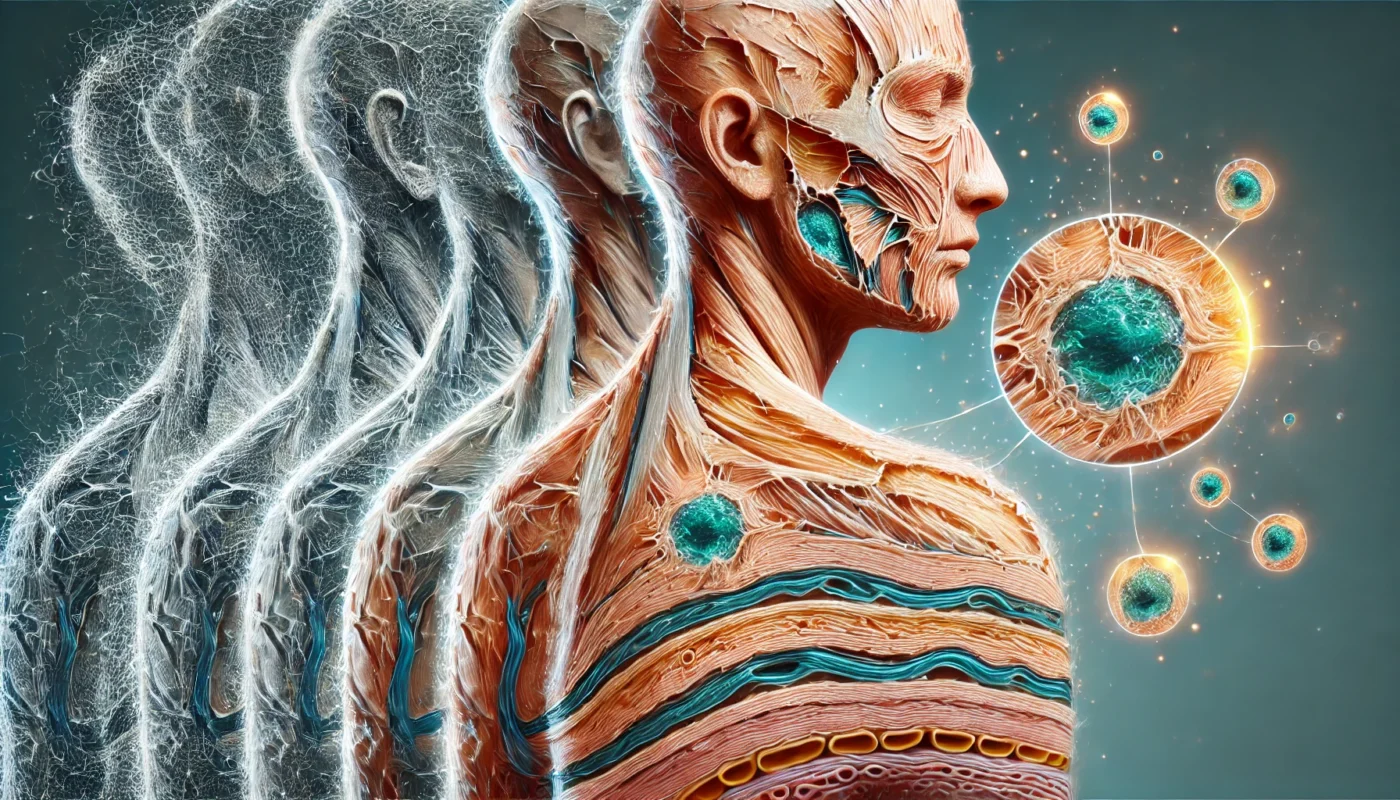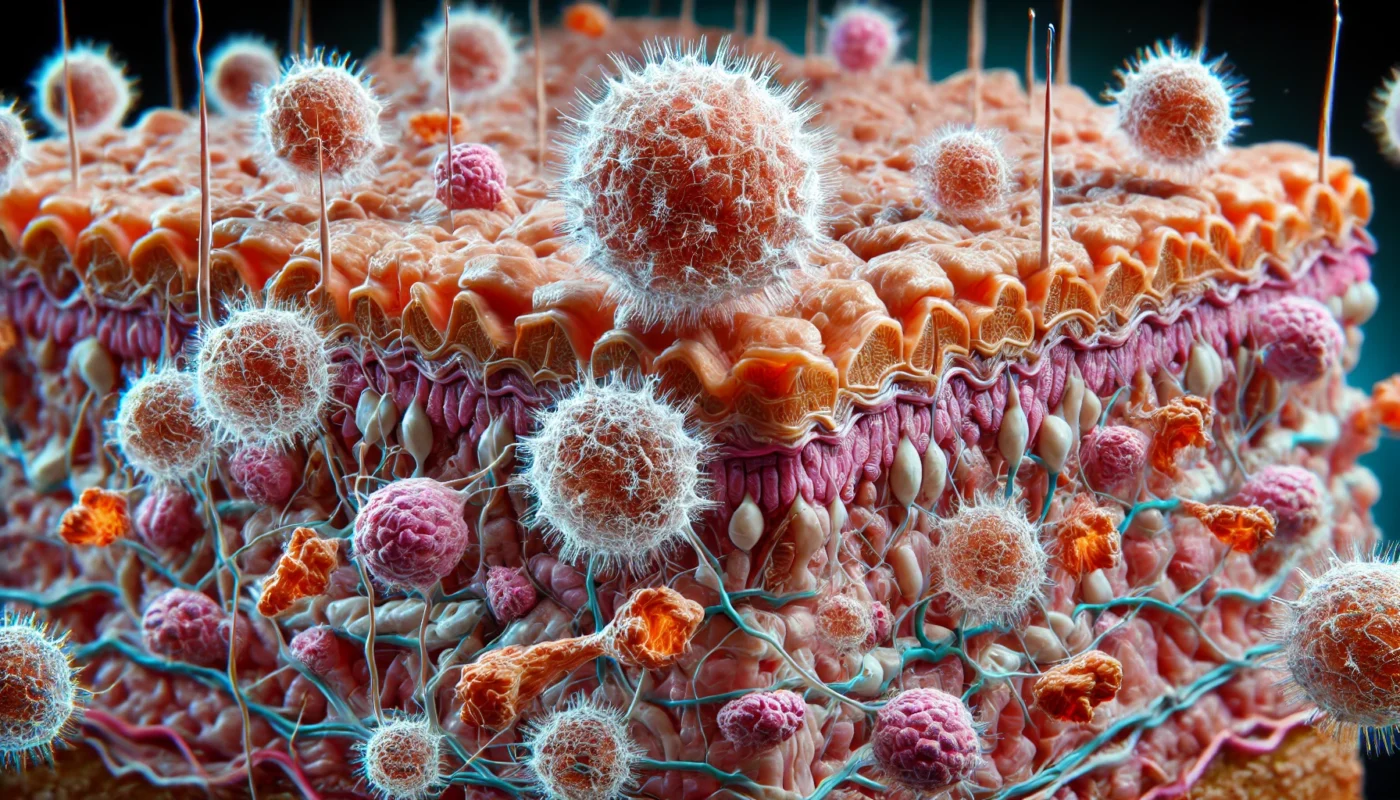Skin regrowth is a fascinating and complex process that plays a crucial role in maintaining our body’s protective barrier. Whether you are a fitness enthusiast pushing your physical limits or a medical patient on the road to recovery, understanding how skin heals and regenerates can empower you to take proactive steps in supporting this vital process. In this comprehensive guide, we will delve into the factors that influence skin regrowth after damage, explore the stages of wound healing, and offer practical advice to aid and expedite recovery.
You may also like: Key Factors in Proliferative Wound Healing
The Intricate Process of Skin Regrowth
The human skin is a dynamic organ, constantly renewing and repairing itself. When skin damage occurs, the body initiates a remarkable healing process, comprising several stages that work together to restore integrity and function.
Stages of Wound Healing
Hemostasis
Immediately following an injury, the body acts quickly to prevent blood loss. Blood vessels constrict to reduce blood flow to the damaged area, and platelets gather to form a clot. This initial response is crucial as it sets the stage for further healing by stabilizing the wound site. The clot not only prevents excessive bleeding but also serves as a temporary barrier to protect against pathogens.
Inflammation
Once hemostasis is achieved, the body enters the inflammatory phase. This stage is characterized by the classic signs of inflammation: redness, heat, swelling, and pain. These symptoms are a result of white blood cells rushing to the wound site to fend off potential infections and clear out debris. While inflammation is essential for healing, excessive or prolonged inflammation can impede recovery, highlighting the importance of a balanced immune response.
Proliferation
The proliferation stage is where the foundation for new tissue is laid. During this phase, fibroblasts play a crucial role by producing collagen, a protein that provides structure and strength to the skin. New blood vessels form, supplying the necessary nutrients and oxygen to the growing tissue. Wound contraction also occurs, pulling the edges of the wound closer together to minimize the area that needs healing.
Maturation
The final stage of wound healing, known as maturation or remodeling, can last several months. During this time, the newly formed tissue gradually strengthens and gains elasticity. Collagen fibers, initially laid down in a haphazard manner, begin to realign and organize themselves. The scar tissue, which is initially thick and prominent, becomes smoother and less noticeable as the skin regains its natural appearance and function.

Factors Influencing Skin Regrowth
Various factors can impact the speed and efficiency of skin regrowth, including:
Age
Impact of Aging on Skin Regeneration
As we age, our skin undergoes numerous changes that affect its ability to heal. The production of collagen, a key component of skin structure, declines with age, leading to thinner skin and slower wound healing. Additionally, older skin tends to be less elastic, which can prolong the closure of wounds. Understanding these changes can help in adopting strategies that support aging skin in its healing journey.
Age-Related Immune Response Changes
The immune system also evolves with age, often becoming less responsive. This weakened immune response can affect the inflammatory phase of wound healing, potentially leading to prolonged inflammation or increased susceptibility to infections. Supporting immune health through diet, exercise, and other interventions can be especially beneficial for older individuals seeking to enhance skin regrowth.
Strategies for Aging Skin
For aging skin, proactive care can make a significant difference in healing outcomes. Regular moisturizing, protection from UV rays, and the use of retinoids can help maintain skin health and improve elasticity. Additionally, incorporating antioxidants into the diet can help combat oxidative stress, a factor that contributes to skin aging.
Nutrition
Essential Nutrients for Healing
Proper nutrition is vital for optimal skin regrowth. Vitamins such as C and E play a pivotal role in collagen synthesis and protection against free radical damage. Zinc is essential for cellular repair and immune function, while proteins provide the building blocks for new tissue. Ensuring a diet rich in these nutrients can significantly impact the body’s ability to heal efficiently.
Role of Antioxidants
Antioxidants are compounds that combat oxidative stress, a process that can damage cells and impede healing. Foods high in antioxidants, such as berries, nuts, and green leafy vegetables, can support the body’s repair processes. By reducing oxidative stress, antioxidants help maintain the integrity of new tissue and promote a smoother healing process.
Hydration’s Role in Nutrition
While often overlooked, hydration is a critical component of nutrition that directly affects skin health. Water facilitates the transport of nutrients to cells and aids in the elimination of waste products. Dehydrated skin is more vulnerable to damage and slower to heal. Ensuring adequate fluid intake is a simple yet effective way to support skin regeneration.
Blood Circulation
Importance of Oxygen and Nutrient Delivery
Efficient blood circulation is crucial for delivering oxygen and nutrients to the site of injury. Oxygen is essential for cellular metabolism and energy production, both of which are necessary for tissue repair. Nutrients transported by the blood support the synthesis of new tissue components, making circulation a key factor in the healing process.
Enhancing Circulation Through Activity
Regular physical activity is one of the most effective ways to improve circulation. Exercise increases heart rate and promotes blood flow throughout the body, ensuring that damaged tissues receive the nutrients they need to heal. Simple activities like walking, swimming, or cycling can have a positive impact on circulation and, consequently, on skin regrowth.
Therapeutic Practices for Improved Circulation
In addition to exercise, certain therapeutic practices can enhance circulation and aid in healing. Massage therapy, for instance, can stimulate blood flow to specific areas, promoting nutrient delivery and waste removal. Compression garments may also be beneficial by applying gentle pressure that encourages venous return and reduces swelling.
Lifestyle Factors
Impact of Smoking on Skin Healing
Smoking has a detrimental effect on skin health and healing. Nicotine constricts blood vessels, reducing blood flow to the skin and delaying the delivery of essential nutrients. Additionally, smoking impairs collagen production, leading to weaker scar formation. Quitting smoking can significantly enhance the skin’s ability to regenerate and repair.
Alcohol Consumption and Skin Recovery
Excessive alcohol consumption can also impair skin regrowth. Alcohol dehydrates the body and disrupts the balance of essential nutrients, both of which are vital for healing. Moreover, alcohol can weaken the immune system, making the body more susceptible to infections. Moderation or abstinence from alcohol can improve overall health and support skin recovery.
Stress Management for Better Healing
Chronic stress can have a profound impact on the body’s ability to heal. Stress hormones like cortisol can suppress the immune system and prolong the inflammatory phase of wound healing. Incorporating stress-reducing practices such as meditation, deep breathing exercises, or spending time in nature can support the body’s natural healing processes.

Practical Strategies for Enhancing Skin Regrowth
Here are some evidence-based strategies to support and enhance skin regrowth:
Topical Treatments
Aloe Vera
Aloe vera is renowned for its soothing and anti-inflammatory properties. Applying aloe vera gel to wounds can help reduce inflammation and promote a moist environment conducive to healing. Its natural compounds accelerate the regeneration of skin cells, making it a popular choice for minor cuts and burns.
Honey
Honey’s natural antibacterial properties make it an excellent choice for wound care. When used as a dressing, honey can prevent infection and support tissue repair. Its high viscosity provides a protective barrier against contaminants, while its nutrients nourish the skin. Manuka honey, in particular, is often recommended for its potent healing abilities.
Vitamin E
Vitamin E oil is often used to minimize scarring and speed up the healing process. It is believed to support skin regeneration by promoting collagen synthesis and protecting cells from oxidative damage. Applying vitamin E topically can help maintain skin elasticity and improve the appearance of scars over time.
Nutritional Supplements
Collagen
Collagen supplements can support skin elasticity and promote faster healing. By providing the body with additional building blocks for collagen production, these supplements can enhance the strength and integrity of newly formed tissue. Incorporating collagen peptides into the diet may result in smoother, more resilient skin.
Omega-3 Fatty Acids
Omega-3 fatty acids, found in fish oil, are known for their anti-inflammatory properties. These healthy fats can help modulate the body’s inflammatory response, reducing swelling and promoting a more efficient healing process. Supplementing with omega-3s can be particularly beneficial for individuals with inflammatory skin conditions or chronic wounds.
Probiotics
The gut-skin axis is an emerging area of research highlighting the connection between gut health and skin health. Probiotics, which support a healthy gut microbiome, can influence skin inflammation and regeneration. Incorporating probiotic-rich foods or supplements into the diet may enhance overall skin health and aid in wound healing.
Mind-Body Practices
Meditation and Yoga
Mind-body practices like meditation and yoga can play a supportive role in skin healing. By reducing stress and promoting relaxation, these practices help regulate stress hormones that can impede the healing process. Regular meditation or yoga sessions can enhance overall well-being and indirectly support the body’s natural ability to repair.
Acupuncture
Acupuncture is a traditional practice that may offer benefits for skin regeneration. Some studies suggest that acupuncture can enhance circulation, reduce inflammation, and promote the release of endorphins, all of which can aid in tissue repair. While more research is needed, acupuncture may be a valuable complementary therapy for those seeking to improve skin healing.
Tai Chi and Qigong
Tai Chi and Qigong are gentle forms of exercise that focus on slow, deliberate movements and breath control. These practices can improve circulation, enhance relaxation, and support overall health. By promoting a balanced flow of energy within the body, Tai Chi and Qigong may contribute to faster and more effective skin regrowth.

Conclusion
Understanding the factors that influence skin regrowth after damage is essential for anyone looking to optimize their health and recovery. By incorporating a combination of proper nutrition, lifestyle modifications, and targeted interventions, you can support your body’s natural healing processes and promote faster, more effective skin regeneration. Empower yourself with the knowledge and strategies outlined in this guide, and take proactive steps to nurture your skin back to health. Remember, your skin is not just a protective barrier; it is a reflection of your overall well-being. By prioritizing its care, you are investing in a healthier, more resilient you.
Further Reading:
Chronic stress, skin regrowth, wound healing, aloe vera, honey, vitamin E, collagen, omega-3 fatty acids, probiotics, meditation, yoga, acupuncture, Tai Chi, Qigong, nutritional supplements, mind-body practices, inflammation, immune system, natural healing, skin health.
Important Note: The information contained in this article is for general informational purposes only, and should not be construed as health or medical advice, nor is it intended to diagnose, prevent, treat, or cure any disease or health condition. Before embarking on any diet, fitness regimen, or program of nutritional supplementation, it is advisable to consult your healthcare professional in order to determine its safety and probable efficacy in terms of your individual state of health.
Regarding Nutritional Supplements Or Other Non-Prescription Health Products: If any nutritional supplements or other non-prescription health products are mentioned in the foregoing article, any claims or statements made about them have not been evaluated by the U.S. Food and Drug Administration, and such nutritional supplements or other health products are not intended to diagnose, treat, cure, or prevent any disease.

